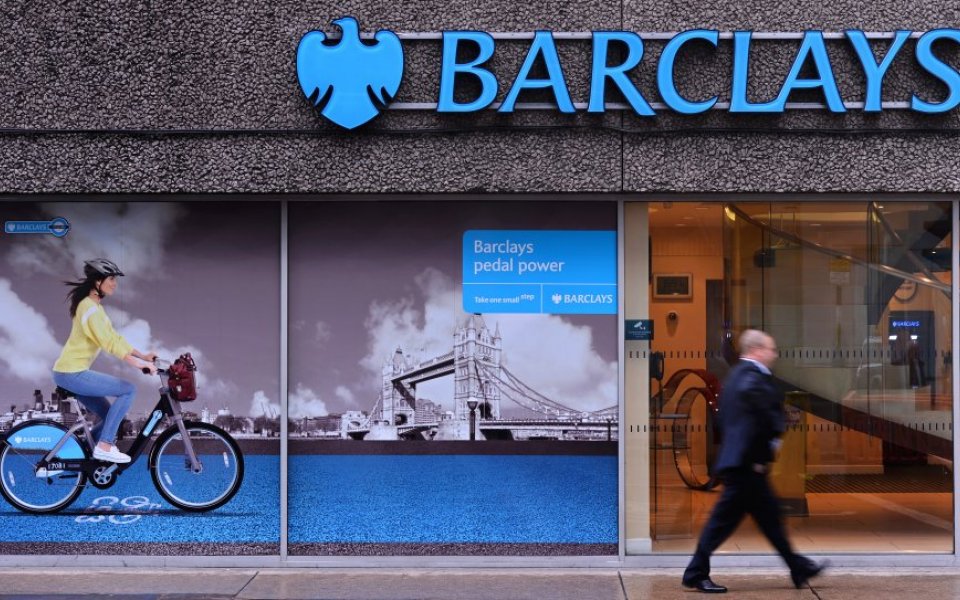Barclays’ share price drops as profits and revenues fall on non-core losses – but CET1 ratio improves

Barclays' share price fell this morning after revealing a slump in profits and revenues for the full year, and a major new strategy ahead of future ring-fencing.
The figures
Barclays' share price fell six per cent in early trading as investors digested the bank's full year results – Jes Staley's first as chief executive – which showed further declines in profit and revenue.
Total income, net of insurance claims, fell five per cent in 2015, to £24.5bn, while net operating income also dropped five per cent to £22.4bn.
Profit before tax fell two per cent to £5.4bn, largely driven by a 24 per cent increase in non-core losses of £1.5bn as a result of the continued rundown. However, this was partially offset by a three per cent increase in core profit before tax to £6.8bn.
The bank has kept its dividend intact, at 6.5p per share – exactly the same as last year. However it has warned that for 2016 and 2017 it will be less than half that amount.
Barclays has managed to improve its CET1 ratio from 11.1 per cent to 11.4 per cent.
Breaking it down by business components, the investment banking arm delivered profit growth of 17 per cent to £1.6bn, while Barclaycard soared 22 per cent to £1.6bn. Personal and corporate banking profits rose five per cent to £3bn.
However profits in its Africa banking division, which is now to be sold down, fell one per cent to £979m.
In terms of fines, Barclays had to stomach a £2.2bn PPI charge, which included an additional £1.45bn charge in the fourth quarter, noting there had been "slower than expected decline in claims volumes during the second half". It also paid out £290m over forex transactions between 2005 and 2012, and in the first half put aside a £282m provision for packaged bank account redress costs.
[charts-share-price id="115"]
Why it's interesting
This is the first set of results presented under new chief executive Jes Staley, who has joined to usher in a new regime post "St" Antony Jenkins.
While much attention will be paid to the restructure of the business, Barclays also gave an interesting update on its trading outlook, warning that the first quarter of this year would likely not be as strong as it was in 2015.
Non-core income is also expected to deteriorate further "as a result of the impact of continued gilt swap spread widening on the fair valuation of the ESHLA portfolio".
What Barclays said
Chief executive Jes Staley praised the performance as demonstrating "the strength of Barclays’ core business, as well as the importance of continuing to make progress in running down non-core and controlling our costs to deliver the returns our shareholders deserve in a reasonable timeframe".
He added: "PCB and Barclaycard delivered excellent results, and Africa Banking also performed well despite currency headwinds.
"The investment bank year on year performance was stronger as the benefits of the strategy implemented since May 2014 were realised. Risk weighted assets in the non-core were down further to £47bn, having more than halved since the unit was created, and maintaining this very good momentum is critical to our future success.
"Group adjusted operating expenses were nearly £100m below guidance, and we have seen our capital position strengthen further with our CET1 ratio increasing to 11.4 per cent and our leverage ratio improving to 4.5 per cent.
"What all of this illustrates is that Barclays is fundamentally on the right path, and is, at its core, a very good business. There is of course more we need to do and areas where I believe we can move much faster to deliver the high performing group that Barclays can and should be. 2016 will consequently be a year of accelerated delivery from a good base.”
What analysts said
Laith Khalaf, senior analyst at Hargreaves Lansdown, said: "Cleaning is very much still in progress at Barclays, as the group seeks to focus its business around its core strengths and mop up the grisly legacy bits that are still weighing the bank down.
"This philosophy is very much in vogue in the banking sector, where the sins of the past continue to loom large. To that end Barclays put aside £2.2bn to cover PPI claims, and booked a £1.5bn loss from the non-core businesses it is downsizing.
"Barclays has decided to jettison its African business, which will free up capital and get rid of an unwanted distraction as the bank continues its clean-up operations. The bank is also cutting the dividend in half for this year and next, and accelerating the run-off of its non-core assets.
"The new boss Jes Staley is clearly taking a big broom to Barclays’ operations in a bid to dramatically simplify the group. When the dust has cleared, the bank should have two high quality financial services divisions, and the potential to offer investors a decent dividend, but it’s going to take some elbow grease to get there."
In short
With Africa the weakest part of Barclays' operations, it's decision to sell down the stake is good timing. But the dividend cut and ongoing issues from losses in non-core parts of the business, as well as legacy fines, continue to dog it.